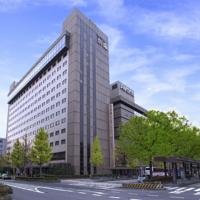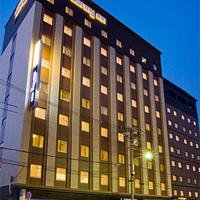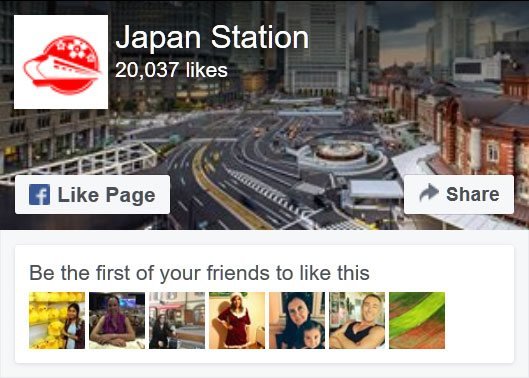The Tokaido Shinkansen is a high-speed “bullet train” rail line operated by JR Central between Tokyo and Shin-Osaka. This is the fastest and most comfortable route to take if you are traveling between Kyoto and other major cities in Japan.
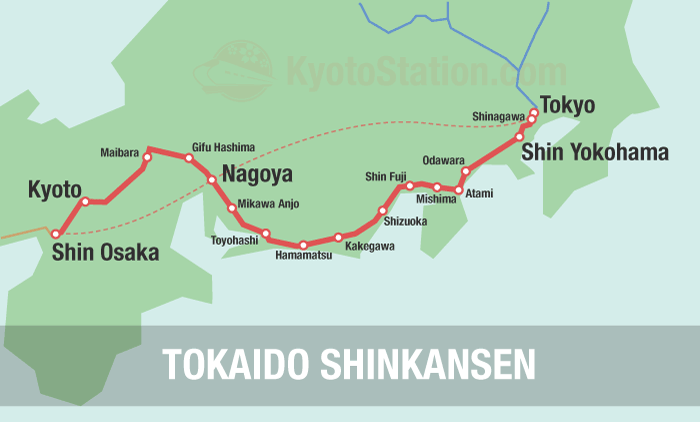
Traveling east from Kyoto you can reach Nagoya in 37 minutes and Tokyo in 2 hours and 20 minutes. Traveling west you can reach Shin-Osaka Station in 12 minutes. Beyond Shin-Osaka, the line is extended westward by the Sanyo Shinkansen line, which goes to Kobe, Himeji, Hiroshima and as far as Hakata in Kyushu.

This route can be very economical if you have a Japan Rail Pass. However, be aware that two of the fastest shinkansen trains, the Nozomi on the Tokaido line, and the Mizuho on the Sanyo line are not covered by the Japan Rail Pass.
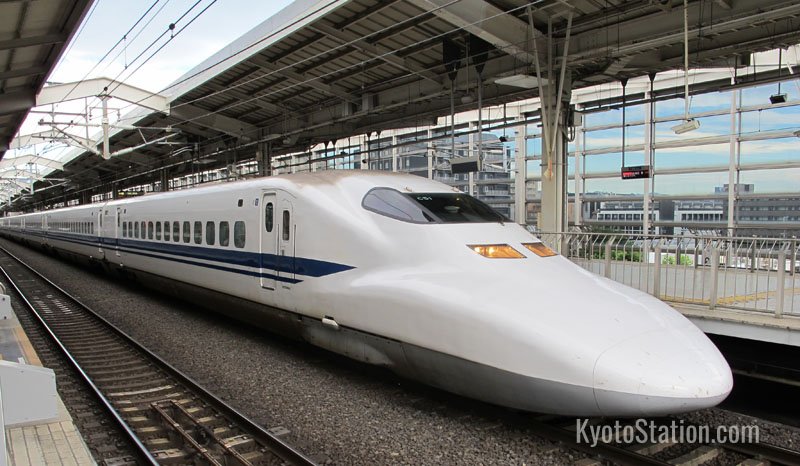
Tokaido Shinkansen train at Kyoto Station
Train Services
There are three types of train on the Tokaido Shinkansen line: the Nozomi, Hikari and Kodama. The Nozomi is the most frequent and the fastest train as it travels between Kyoto and Tokyo in just 2 hours and 20 minutes. However, this train is not covered by the Japan Rail Pass. If you wish to use the Japan Rail Pass, your best choice is the Hikari which takes just two hours and 40 minutes to cover the distance. The Kodama stops at every station en route and so takes about four hours.
Tickets
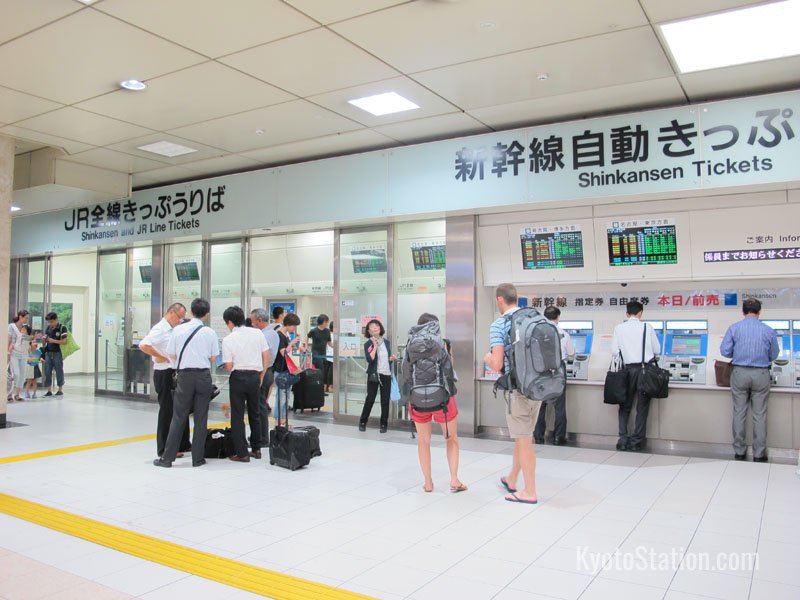
Shinkansen ticket machines and ticket offices
You can find ticket machines and ticket offices beside all the shinkansen ticket gates. When you purchase your tickets you will receive three cards. One is your basic fare ticket (乗車券 – joshaken). You can use this ticket to pass through regular JR ticket gates. Another is your super express ticket (特急券 – tokkyuken). You will need both your basic fare ticket and super express ticket to pass through the shinkansen gates. And the third card may look like a ticket, but it is actually just a receipt. You can see a pictorial English guide to these tickets on the JR Central website. Be sure to keep all your tickets safely so you can show them to the conductor on the train.
When buying your tickets you will need to decide on your seat preferences. There are two classes of carriage on shinkansen trains: Ordinary and Green Cars. The seats on Ordinary Cars are comfortable enough, but the seats on Green Cars are larger and offer a little more comfort, quiet and leg-room. Naturally, tickets for the Green Cars are more expensive and must be reserved in advance. Also, when purchasing a Japan Rail Pass, you must choose between an Ordinary Pass or a Green Pass.
For ordinary tickets both non-reserved (自由席 – jiyu seki) and reserved seats (指定席 – shitei seki) are available in different carriages. The reserved seats will cost you a little extra. However, during busy periods (particularly national holidays) the non-reserved carriages do fill up, so it may be worth making a reservation to avoid the risk of standing throughout the journey.
To summarize, when buying your tickets you will need to offer the following information:
- The number of travelers.
- The departure station and destination.
- The date and time of travel.
- One-way or return.
- Preferences: Ordinary or Green Car, Reserved or Non-reserved, Smoking or Non-smoking.
For more details on buying tickets please check the JR Central website.
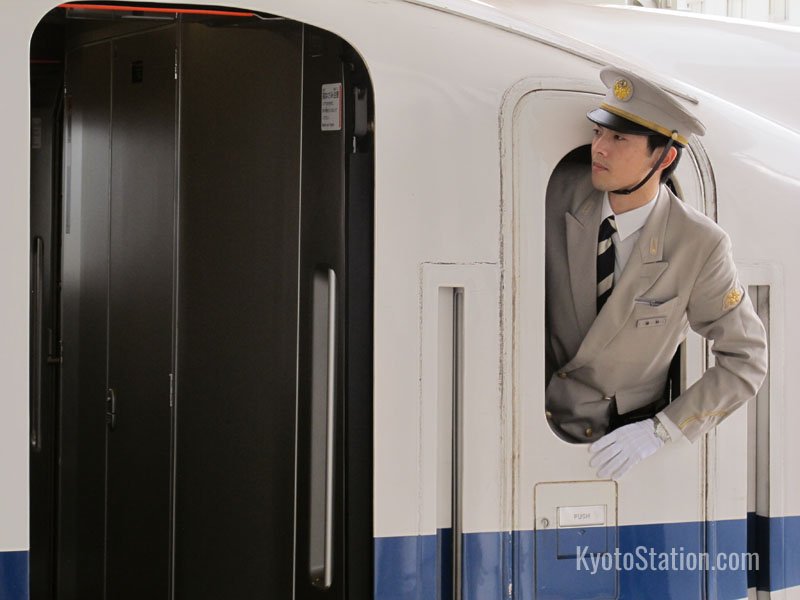
All aboard!
Discounts
The Japan Rail Pass can be used for all shinkansen trains except the Nozomi and Mizuho. This pass is recommended if you intend to do much long distance travel in Japan as it offers significant savings. This pass is only available to foreign tourists and must be bought before you come to Japan.
Platt Kodama offers a discount ticket of 10100 yen on the Kodama (slow) train between Tokyo and Kyoto. This must be booked at least one day in advance at JR Tokai Tours offices. Check the official website for details.
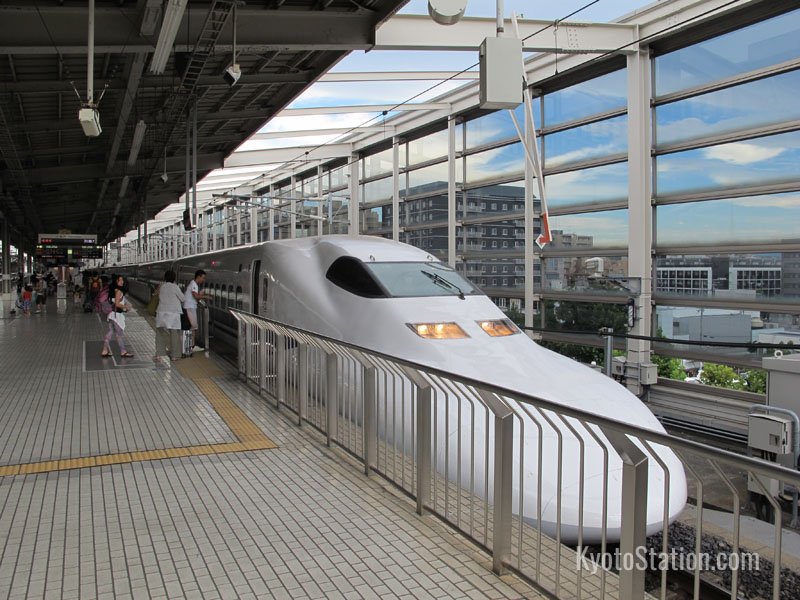
A bullet train bound for Tokyo
Popular Hotels near Kyoto Station
Shinkansen Transfers in Kyoto Station
There are multiple entry and exit points for the shinkansen tracks in Kyoto Station and Kyoto Station is very big, so it is very easy to get disorientated. To help your arrival or transfer go smoothly, it might be a good idea to familiarize yourself with the layout of Kyoto Station before you arrive. You can download a free PDF with a detailed map of each floor of the station from the JR West website.
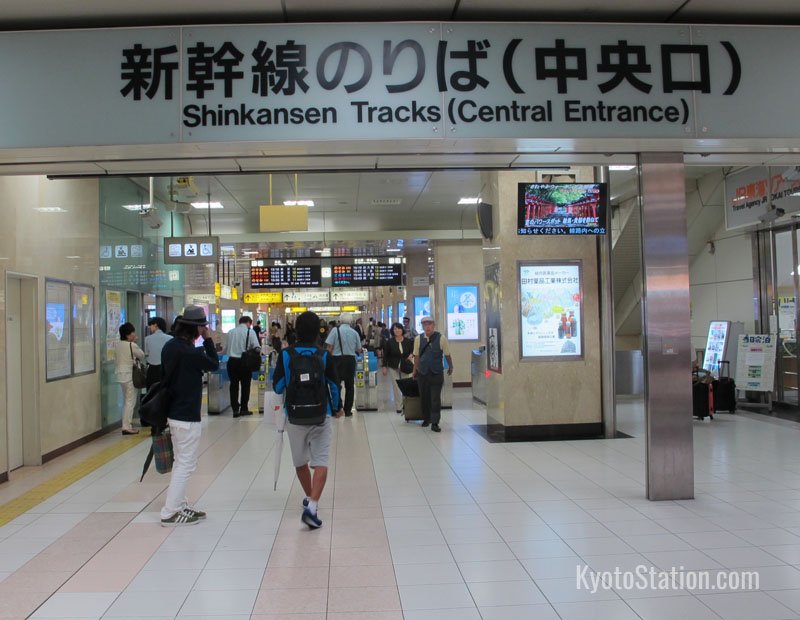
The Shinkansen Central Gate at Kyoto Station
Direct Access:
If you examine the station map, you can see that the gates for the shinkansen tracks are all on the south side of the station. These are the Shinkansen Central Gate, the Shinkansen Hachijo Gate, and the Shinkansen Hachijo East Gate. Passing through these gates you have direct access to the shinkansen tracks.
For ease of orientation the Shinkansen Central Gate is probably the easiest to use. However, if you are arranging to meet someone, please be aware that the Shinkansen Central Gate (also called the新幹線中央口 or Shinkansen Chuo Guchi) is not the same as Kyoto Station’s main Central Gate (also called the中央口 or Chuo Guchi) which is on the north side of the station. It is probably best to confirm before meeting which of these gates you intend to meet at, so that you don’t end up on opposite sides of the station!
Transfers from Regular Platforms:
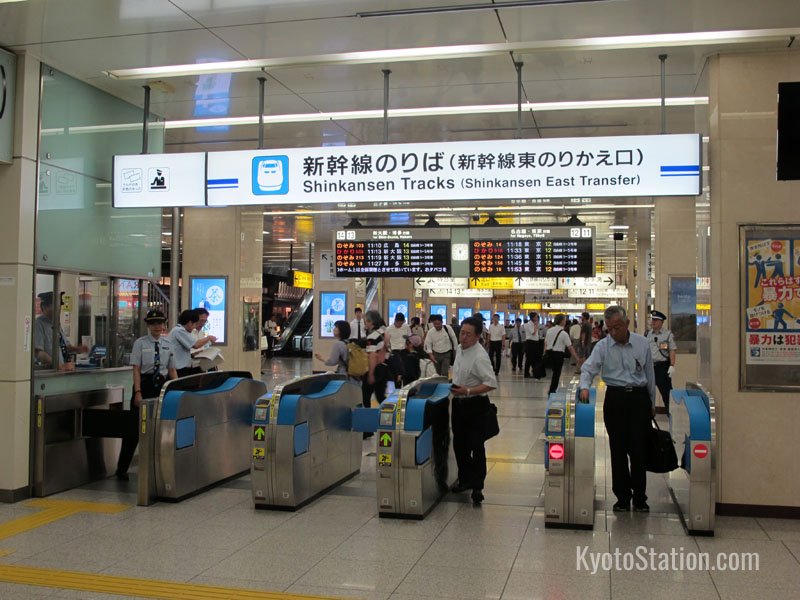
The Shinkansen East Transfer Gate at Kyoto Station
You can also access the shinkansen tracks from the regular JR West platforms via transfer gates. These are also on the south side of the station, and are the Shinkansen East Transfer Gate and the Shinkansen Central Transfer Gate. If you are arriving at Kyoto Station on a regular JR train line, these are the gates you would use. If you arrive by shinkansen and exit via one of these transfer gates, you will still need to use your ticket to exit again through a regular JR ticket gate.
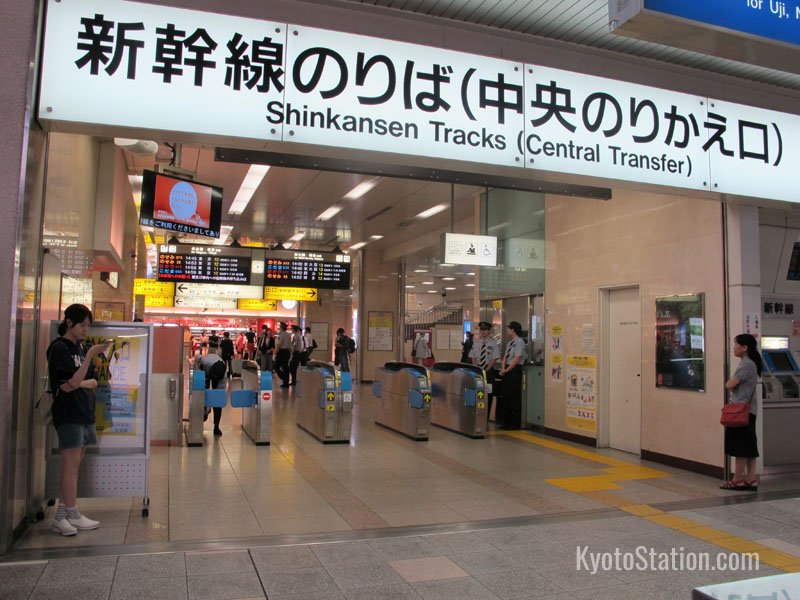
The Shinkansen Central Transfer Gate at Kyoto Station
Also, if you enter Kyoto Station from the north side of the station, it might be quicker to use your basic fare ticket to pass through the regular JR ticket gates first, and then follow the signs for the shinkansen transfer gates. In this case your shinkansen tickets would take you through two sets of gates. Similarly, you can transfer to the shinkansen tracks from the Karasuma Subway Line, via the underground concourse beneath Kyoto Station. Simply pass through the regular JR gates first, and then follow the bilingual signs for the shinkansen transfer gates.
View detailed route maps for both the Tokaido and Sanyo Shinkansen lines.
You can download PDFs of the timetables for the Tokaido Shinkansen from this JR Central page, but to find train times quickly and easily use the JR West Timetable & Route Finder.
Article and photos by Michael Lambe

